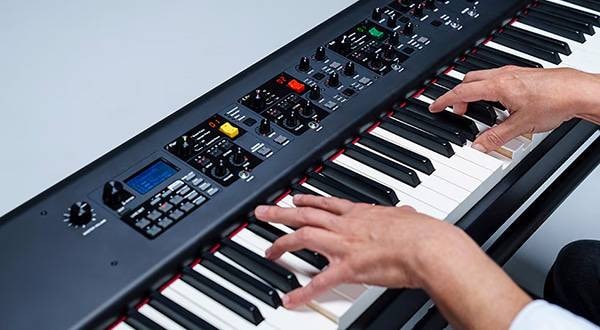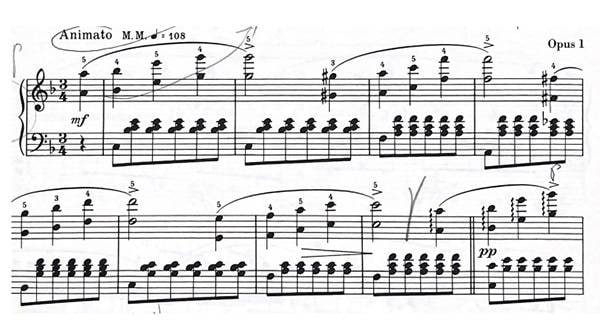Do you know the drama Nodame Cantabile?
This show first aired in 2006. The story is set in a music conservatory where we follow the turbulent lives of two music students: the free-spirited Nodame (Megumi Noda) and the genius elite student, Shinichi Chiaki. The drama depicts their ups and downs as they navigate their music university life.
After the TV series, there was also a New Year's special and the two-part final chapter aired.
In this post, I want to introduce some of the classical pieces used in Nodame Cantabile! If you watched the drama, you will surely remember all of these pieces!
♪ Beethoven: Piano Sonata No. 8 "Pathétique" 2nd Movement, Op. 13
This piece is the one that connects Nodame and Chiaki.
One night, Chiaki was drunk and passed out in front of the door, and was found by Nodame, who happened to live in the apartment next door. She takes him in, and Chiaki becomes captivated by Nodame's performance of "Pathétique". But... you'll have to watch the drama to see what happens next! (laughs)
This is one of Beethoven's Three Great Sonatas. The "Pathétique" is divided into three movements, but the most famous is definitely this second movement. The melody, wrapped in a slow and warm ambiance, is something you’ve probably heard at least once.
"Pathétique" literally means “sorrowful and tragic”. However, Beethoven's "Pathétique" Sonata conveys not only sadness but also a strong sense of determination to move forward despite his hardships. Don’t you feel the emotion in the piece, especially as the music starts out gently and gradually grows more intense in the latter half?
Given that Beethoven lost his hearing, you can truly feel the strength of his inner emotions in this music.
♪ Gershwin: Rhapsody in Blue
This is the piece that plays during the ending of the drama. It’s memorable from the scene where Nodame, dressed in a mongoose costume, performs on the melodica. (^_^)
Gershwin was not only a composer of classical music but he also worked in genres like jazz. When you listen to this piece, you’ll immediately notice that compared to Beethoven or Chopin, the harmony is more stylish, and the melodies seem to dance freely, almost like the notes are bouncing. It’s a piece that brings joy to your heart with its lively and liberating musical movement!♪
♪ Chopin: Etude Op. 10-4
Nodame played this piece in front of her teacher when she was still an elementary school student. It's an incredibly difficult piece, so it’s astonishing that she was able to play it at such a young age. She stayed at her teacher Eto’s house for lessons in preparation for a competition, and after finishing the piece, she collapsed onto the piano in exhaustion...
This etude is so fast-paced that there’s no time to catch your breath from start to finish—so playing it requires a lot of stamina! There’s no time for a break, not even for a little pause (laughs). While it’s a challenging piece to perform, it’s one of my personal top 3 favorite Chopin etudes. It's just so cool, and it fills you with energy!
♪ Rachmaninoff: Piano Concerto No. 2
This is one of the most emotional scenes where Chiaki performs as the piano soloist with the orchestra.
The opening is absolutely stunning! The piano solo draws the audience into the world of the music with all its power.The sight of Chiaki playing it is simply mesmerizing.
By the way… figure skater Mao Asada used this piece in her Olympic performances!
Before composing this piece, Rachmaninoff suffered from severe depression... but after treatment, he fully recovered and resumed his work as a composer, completing this concerto during that time.
You can really feel that Rachmaninoff regained his sense of hope, peace, and vitality in this piece.
The performance lasts about 35 minutes, and although it's a long work, it features many simple yet memorable melodies that will stay in your head. It’s a piece that you can enjoy listening to from start to finish in one sitting.
♪ Debussy: The Isle of Joy (L'île Joyeuse)
For those who have seen the drama, you will surely recognize this piece — the one with the catchy line "Koi shichatte runrun♪"! It was performed by Nodame during the second round of the competition.
The Isle of Joy was inspired by the painting Pilgrimage to the Isle of Cythera by Jean-Antoine Watteau. Debussy, one of the leading composers of Impressionism, created music that vividly evokes landscapes and scenes.
Although Debussy was married, he fell in love with another woman and traveled with her to the Island of Jersey. The intricate melodies, which suggest their rush and longing, coupled with the grand harmonies that evoke a sense of joy despite the forbidden love, make for a truly captivating listening experience.
What do you think? Writing this blog made me want to watch Nodame Cantabile all over again! For those who don't typically listen to classical music, I believe this drama will stir up the unique power of classical music in your heart.
For those who haven't seen Nodame Cantabile yet, I highly recommend you give it a watch!

















 Roland 電子ピアノデジタルピアノ購入ガイド
Roland 電子ピアノデジタルピアノ購入ガイド
 ピアノアコースティックピアノ 入門ガイド
ピアノアコースティックピアノ 入門ガイド
 PLAYTECH キーボードセレクター
PLAYTECH キーボードセレクター
 おすすめの電子ピアノ
おすすめの電子ピアノ
 自分にあったピアノを選ぼう!役立つピアノ用語集
自分にあったピアノを選ぼう!役立つピアノ用語集
 キーボードスタートガイド
キーボードスタートガイド















